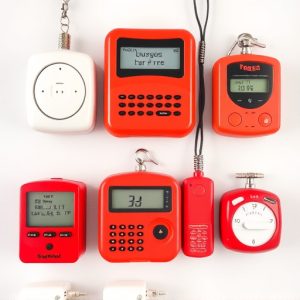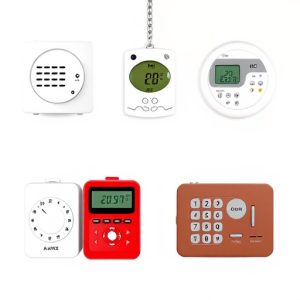Personal Safety Alarms for College Students: Choosing the Right Alarm with Optimal Sound Range
Personal attack alarms are compact yet powerful tools designed for college students' security,…….
Personal attack alarms are compact yet powerful tools designed for college students' security, featuring high-decibel alarm sounds that can deter attackers and attract help within a range of 30-200 feet. To ensure effectiveness, choose alarms with loud (90-120 dB), distinct tones capable of cutting through campus noise. Key features include adjustable sound settings, portability, ease of use, and long-lasting batteries. Regular testing and strategic usage maximize their safety benefits, emphasizing a loud, piercing sound for swift response in emergencies.
“Ensuring safety on college campuses has never been more crucial, especially with personal attack alarms becoming essential tools for students. This comprehensive guide delves into the world of personal safety alarms, designed to offer peace of mind and immediate assistance in potentially dangerous situations. From understanding the basic concepts to exploring the impact of sound range, we’ll help you navigate the options.
Learn about different alarm types, essential features to consider, and expert tips to maximize their effectiveness, ensuring you’re prepared for any unexpected event.”
- Understanding Personal Safety Alarms: A Lifesaver for College Students
- The Importance of Sound Range in Personal Attack Alarms
- Types of Personal Safety Alarms: Which One is Right for You?
- How to Choose the Best Personal Attack Alarm for Your Needs
- Safety Tips: Maximizing the Effectiveness of Your Personal Safety Alarm
Understanding Personal Safety Alarms: A Lifesaver for College Students
Personal safety alarms are small, yet powerful tools designed specifically for college students’ peace of mind. These devices emit a high-decibel alarm sound when activated, effectively deterring potential attackers and drawing attention to a dangerous situation. With a range that varies from 30 to 200 feet (depending on the model), they provide a safety net in crowded campus areas or remote locations like dormitories or libraries.
For students walking alone at night, attending late-hour study sessions, or participating in extracurricular activities after dark, these alarms offer an extra layer of protection. Their compact size allows for easy carrying or attachment to keys, bags, or even inside dorm rooms, ensuring quick accessibility during emergencies. The distinct alarm sound is designed to startle and alert bystanders, potentially saving precious time during a personal attack or other dangerous incidents.
The Importance of Sound Range in Personal Attack Alarms
The effectiveness of a personal attack alarm heavily relies on its sound range, which plays a crucial role in ensuring users’ safety. A key consideration for college students carrying these devices is the ability to emit an audible signal that can reach nearby ears quickly. In bustling college campuses with hustle and bustle, it’s essential for alarms to cut through the noise pollution. A loud, distinct alarm sound within a good range—typically around 90-120 decibels (dB)—is ideal as it can startle an assailant and alert those in the vicinity, potentially deterring harmful actions.
Students should opt for alarms with adjustable sound settings to cater to different environments and personal preferences. This feature allows them to choose a volume that’s conspicuous yet not disruptive, ensuring the alarm’s primary purpose—to signal distress—remains effective. In today’s digital era, where folks are often engrossed in their devices, a powerful and unique alarm sound can be a game-changer, serving as a reliable means of personal safety.
Types of Personal Safety Alarms: Which One is Right for You?
Personal safety alarms are an essential tool for college students looking to protect themselves while on campus or during late-night study sessions. When choosing a personal safety alarm, understanding the different types and their features is crucial. One of the primary considerations is the personal attack alarm sound range. These alarms typically emit high-decibel sounds to deter potential attackers and draw attention. Some devices offer loud, piercing sirens, while others may use unique, memorable sounds to ensure you’re heard.
Beyond sound, consider the ease of use and portability. Keychain-sized alarms are convenient and easily accessible, perfect for sudden emergencies. More robust designs with longer battery life are ideal for students who want peace of mind during their daily commutes or late-night walks. Each type has its merits, so select one that aligns with your personal safety needs and comfort level, ensuring you’re prepared should the unexpected occur.
How to Choose the Best Personal Attack Alarm for Your Needs
Choosing the best personal attack alarm involves considering your specific needs and safety requirements. One crucial factor is the Personal Attack Alarm Sound Range. Look for an alarm with a loud, piercing sound that can attract attention quickly – ideally above 100 decibels for maximum effectiveness. This range ensures that your alarm is heard even in noisy environments or when you’re far from others.
Additionally, think about the alarm’s convenience and portability. A compact design makes it easier to carry around campus, whether attached to your keychain, backpack, or stored in your dorm room. Some models offer various sound options and customizable settings, allowing you to adapt the alarm to different situations. Features like long-lasting batteries and easy activation are also important for peace of mind.
Safety Tips: Maximizing the Effectiveness of Your Personal Safety Alarm
To maximize the effectiveness of your personal safety alarm, it’s crucial to understand its sound range and how to use it strategically. Make sure you choose an alarm with a loud, distinct sound that can cut through ambient noise, especially in bustling college environments. Test the volume levels in various settings to ensure it’s heard above common campus noises like traffic, chatter, or music.
When carrying your personal attack alarm, position it close to your body for easy access during emergencies. Consider keeping it in a pocket or on a lanyard around your neck. Practice activating the alarm regularly so you can respond quickly and confidently if faced with a potentially dangerous situation. Remember, the goal is to startle an assailant and attract attention, so a loud, piercing sound is key to ensuring your safety.
Personal safety alarms are invaluable tools for college students, offering peace of mind and enhanced security. By choosing the right alarm with an optimal sound range, you can ensure your personal space is protected. With various types available, understanding your needs and preferences is key. Follow the practical tips outlined in this guide to select and utilize a personal attack alarm effectively, empowering yourself to stay safe during your college journey.

